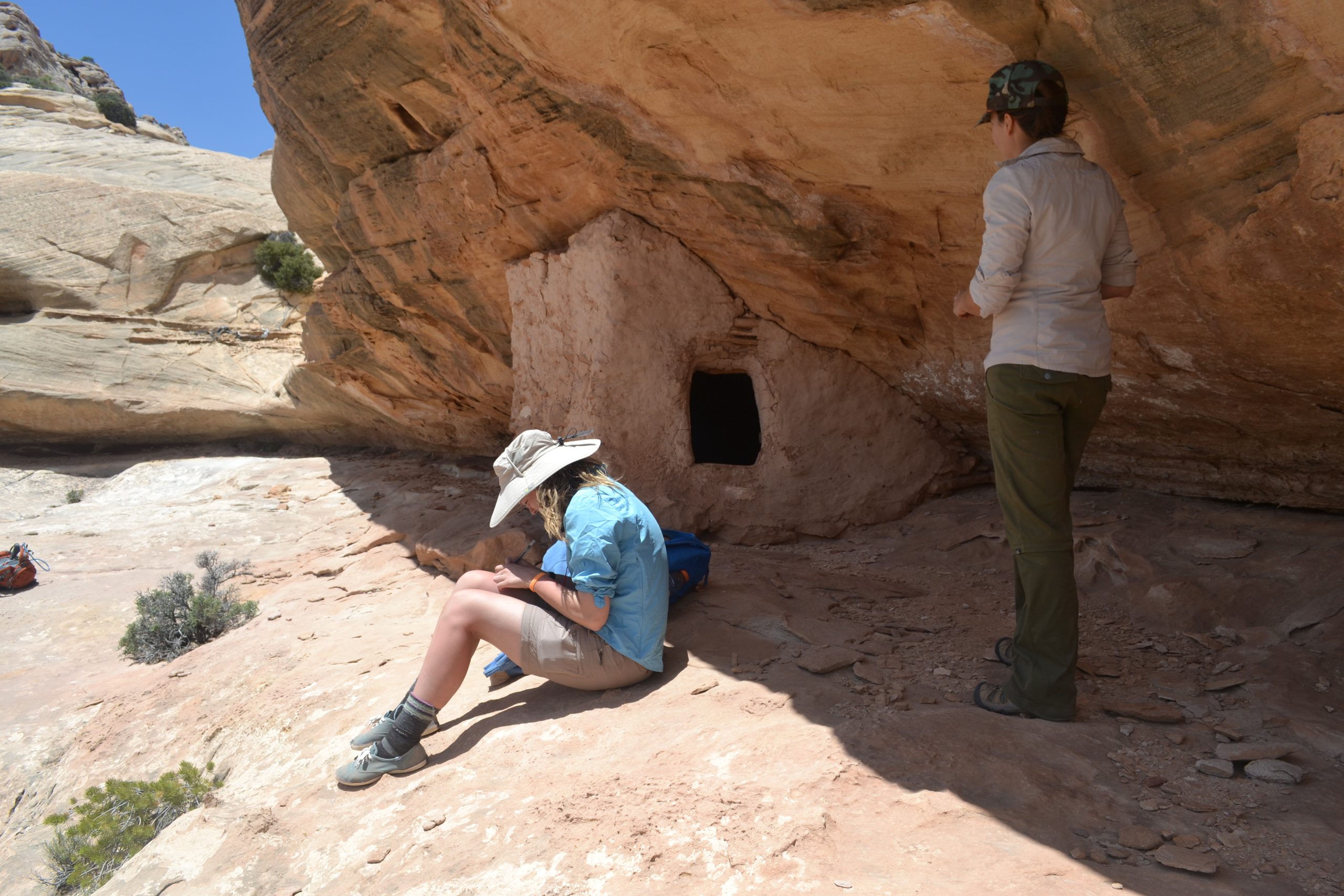Some information may be outdated.
A free lecture series sponsored by the Canyonlands Natural History Association and the Museum of Moab draws out-of-towners and locals alike for its interesting presentations by professional archaeologists, paleontologists, botanists and geologists.
Two presentations are scheduled in the next two weeks – one for Thursday, June 15, and another on Thursday, June 22, starting at 6 p.m., at the Moab Information Center. You might want to come early to ensure a seat – it’s usually a full house, said Marty Thomas, a local archaeologist who volunteers to help schedule the speakers.
Museum of Moab Director and paleontologist John Foster said he will give an overview of the paleontological record of eastern Utah, with some mention of western Colorado, at the June 15 presentation.
“I’ve organized it as a journey through time,” Foster said. “I start with the oldest rock record and make our way up. It will be a whirlwind tour of 500 million years of history.”
He said his presentation will include a reconstruction of how the environment appeared at that time. Foster will show slides to accompany his talk, which will include a question-and-answer period at the end of his hour-long presentation.
Foster has worked as a paleontologist in the eastern Utah and western Colorado region for the past 16 years. The area is rich in paleontological findings because the right-aged rocks are exposed at the surface, and there is relatively little vegetation, he said.
”There’s a really good record here,” he said. “In some places, the right-aged rock (is present) but it’s buried underneath grass or forest. Here, we have the perfect combination of rocks, and you can see it.”
On June 22, Brigham Young University Master’s student Jaclyn Eckersley will be presenting her research of ceramics from an area called Beef Basin, located within the newly designated Bears Ears National Monument.
By studying the pottery traits, Eckersley said she has been able to determine, thus far, that occupation of the area where the ceramics is found dates back to the late Pueblo II Period and early Pueblo III Period, or from 900 to 950 and 1150 to 1300. Eckersley said she will show photos and maps from her fieldwork.
Professional archaeologists and paleontologists often contact the Moab Information Center because they know about the lecture series and are glad to share their knowledge with the community, MIC manager Sharon Kienzle said. Typically, the lectures draw about 40 people, she said.
Examples of past speakers include Steve Simms, an archaeologist who helped date the Ghost Panel in Canyonlands National Park, and Seth Jarvis, director of the Clark Planetarium in Salt Lake City.
The Thursday night free lecture series begins in April and continues through the end of October. The National Park Service, the U.S. Forest Service and the Bureau of Land Management (BLM) also contribute speakers to the lecture series, Thomas said.
Speakers focus on regional paleontology, Bears Ears archaeology
What: Moab Information Center’s Thursday night lecture series
When: Every Thursday at 6 p.m.
Where: Moab Information Center, corner of Main and Center streets
Cost: Free
Information: www.cnha.org
The Moab Information Center is located at the corner of Main and Center streets. For more information, go to: www.cnha.org/news-blogs-and-lectures/cat/mic-lectures/.
Appreciate the coverage? Help keep local news alive.
Chip in to support the Moab Sun News.





